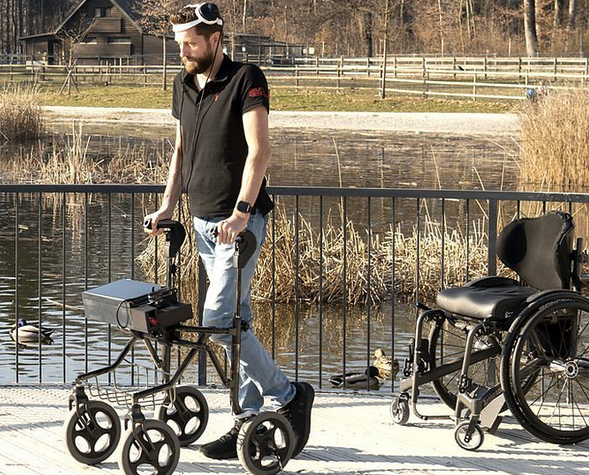
In Europe, a Dutch man who was paralyzed following an accident can climb stairs with crutches after receiving brain implants.
These implants allow his brain to send signals to his spine through a computer in a backpack with two 5-centimeter discs that rest on the brain’s surface, and communicate wirelessly with a helmet-like receiver that sends signals to the backpack computer. The computer then sends signals to stimulators put into the man’s spinal cord, which trigger movements of the leg muscles. The system is an upgrade on the first version, which the man received five years ago, which involved only the spinal electrodes. With this version, the man can adjust when the stimulation is turned on and by how much, making the movement very fluid.
The resulting steps allowed the man to walk over flat ground using a wheeled walking frame. The brain-controlled system also leads to a wider variety of movements of the hips, knees, and ankles.
Nine people have received the spinal implants alone, controlling their motion either by making small residual movements of their legs or by pressing buttons on the walker. The team also has the approval to try using the same approach to restore arm movements for people who are paralyzed from the neck down. However, the system is still in the early stages of development, and it would be too expensive to become widely used for other people with spinal cord injuries.